What is a Trip Hazard and 7 Steps to Avoid One
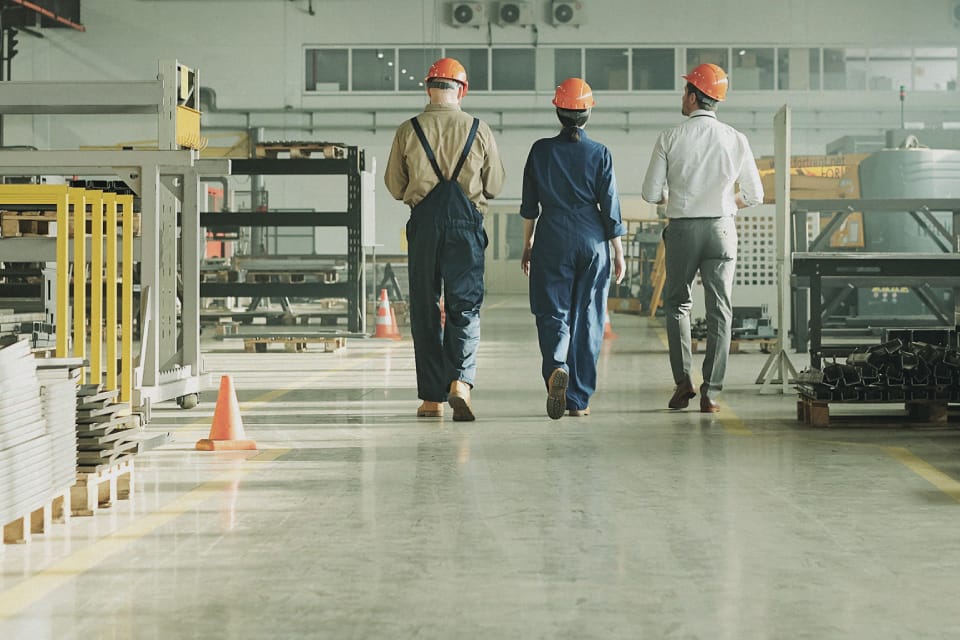
Worker safety is paramount in today’s ultra-competitive and fast-moving working environment. However, job sites expose team members to several risks, few more prevalent than a trip hazard.
Slips, trips, and falls are often common occurrences on the worksite and a cause of injury. Employers must recognize, assess, and remove trip hazards from the workplace to lower the risk of workplace injuries and provide an environment that encourages productive work.
This article defines a trip hazard and discusses seven strategies to identify, assess, and remove one.

What is a Trip Hazard?
A trip hazard occurs when a worker’s foot strikes or lands on something dangerous. These hazards include a sunken or elevated walkway, a sudden rise, a slippery surface, and other conditions.
7 Ways to Prevent a Trip Hazard
1. remove obstacles in walkways.
Injuries often occur when workers trip over objects – such as waste, building materials, and equipment – left in designated walkways on the worksite.
The best way to prevent this risk is to support proper cleanliness in busy work and traffic areas, which might include the following steps:
- Conduct periodic slip and trip hazard
- Avoid stringing cords, cables, or air hoses across walkways.
- Keep all work areas clean and orderly.
2. Maintain Floor Safety
Fall protection involves more than just cleaning up spills from the floor. It also entails paying attention to the surfaces’ standards for walking and working.
Changing the floor area can help ensure safety from trips, slips, and falls. The following suggested practices can help businesses improve the quality of their floors:
- Invest in non-slippery, durable flooring.
- Set up mats, pressure-sensitive abrasive strips, paint-on coatings with abrasives, and synthetic decking. They offer sufficient friction and lessen foot stress.
- Regularly check floors for dangers that could cause trips and falls, such as cracks, holes, missing blocks, and uneven surfaces.
3. Wear Proper Shoes
Footwear can have a significant impact on preventing falls, and safety teams should consider the following to avoid trip hazards:
- The type of heels worn
- How smooth the bottoms are
- How the shoelaces are tied
Additionally, when management reviews a fall-related injury, they must assess footwear worn at the time, decide if it played a role in the incidence, and require that workers switch to shoes that are right for the responsibilities of their job.
4. Use Signage
Signage is a valuable warning system for many worksite risks, especially trip hazards. There are two sign types safety teams can use to prevent falls:
- Temporary signage. Safety teams should establish temporary warning signs while addressing a new trip hazard, such as removing walkway debris, cleaning up a spill, or repairing damaged floors. However, while these short-term signs help prevent injuries, management must address the hazard immediately.
- Permanent signage: A permanent sign can help warn workers to watch out for unavoidable hazards, such as uneven ground. However, safety teams should use these only when necessary because workers might ignore a cluster of signs or ones they see daily.
5. Ensure Proper Lighting
Workers need to be able to see their surroundings to avoid slips, trips, and falls, and poor lighting on job sites makes that problematic. Safety teams can help make work sites more visible through the following strategies:
- Repair switches and cords immediately after they stop working.
- Use sufficient lighting in walkways, hallways, and on staircases and ramps.
- Clear the area around light switches and ensure they are easily accessible.
- Instruct workers to turn on the light before entering a dark room.
6. Provide Trip Hazard Training
Educating workers on finding and preventing a trip hazard will help keep them safe, and safety teams should provide them with detailed instructions on the conditions they’ll work in and the dangers they’ll encounter.
Furthermore, management should conduct regular safety meetings or presentations, which are a terrific way to update the team on newly implemented safety measures or to remind them about seasonal concerns.
7. Develop safety plans
All efforts to promote fall prevention, especially in high-risk workplaces, are solidified by a well-thought-out safety strategy, which might include the following steps:
- Developing safety practices and standards
- Conducting trip hazard assessments
- Performing periodic maintenance inspections
- Studying specifications for safety equipment
Along with these recommendations, safety officers, onsite workers, and authorized staff can hold frequent toolbox discussions about trip hazards. These safety lectures can increase team members’ awareness and highlight the risks involved with their jobs, giving them better protection against accidents caused by slips, trips, and falls.
Preventing Trip Hazards Requires the Best Safety Solutions
In the workplace, trip hazards are relatively common and, unfortunately, can cause severe injuries. Management must do its best to identify and eliminate potential risks to ensure workers perform their duties safely by considering the abovementioned strategies.
The best employees want to work on the job sites of companies that put safety first, and those employers who take these proactive steps to remove hazards demonstrate their concern for workers, contribute to developing a culture of safety that helps everyone involved, and attract better talent.
Consider partnering with us to tailor a solution that helps you create a safer workplace for your workers, customers, and visitors.
Contact us today to learn more.

Total supply chain risk management starts here
Talk to Sales
See related resources

Safety Pros: Finding Your Mission | The Risk Matrix Episode 48
The Risk Matrix is your premier destination for insightful discussions on risk management and health and safety, with captivating topics,…
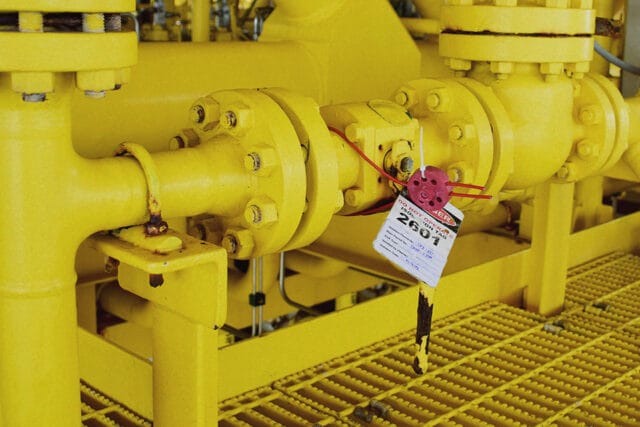
What is Lockout / Tagout Training?

Top Five Innovations in Oil and Gas Drilling
Get useful resources. no fluff..
We’ll send you practical and insightful supply chain risk management info that can benefit your business. Plus, important company updates that keep you in the loop.


- Toolbox Talks
What is a Trip Hazard and how do you prevent them?
- by Afnan Tajuddin
- Trip Hazard & prevention
Table of Contents
Trip hazards
Trips occur when your foot strikes or collides with something, causing you to lose your balance. In most situations, individuals trip over obstacles that aren’t visible, such as uneven flooring edges, messy equipment, tools, or cables.
Accidents from trips are among the most common causes of accidents at work! Trip hazards result in thousands of injuries every year. The most common ones are musculoskeletal, cuts, and bruises but more serious conditions can also occur such as fractures or dislocations
You can’t have a safe and healthy work environment if people aren’t able to move around it freely.
Every day, you are tasked with performing tasks that require the use of your legs. Below I’ve listed common trip hazards and how to assess them so they don’t cause injury or accident.
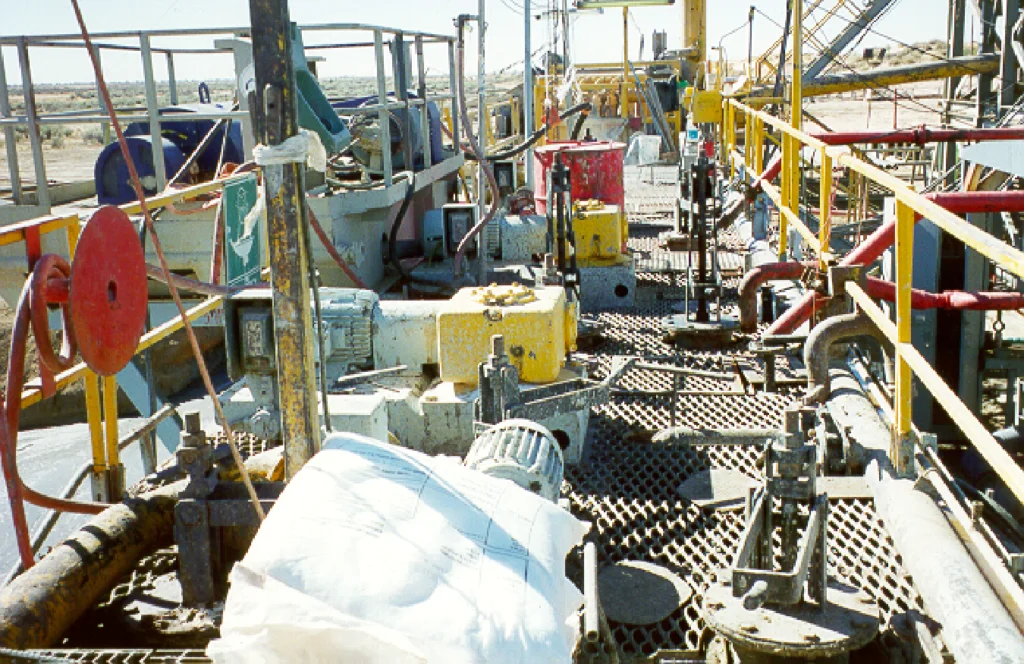
Common trip hazards
- Cluttered environment and poor housekeeping
- Scattered tools, material, electrical cables & hose in workplace
- Lack of illumination
- Floor surfaces that are uneven or damaged or floor coverings that are unsuitable
- Obstructed view
- Failure to use handrails when climbing on the stairs
Safety Controls for trip hazards:
The incidence of trips in the workplace can be dramatically reduced by implementing policies to regulate behavior. Time pressures on employees who are completing tasks might cause them to rush through work or not pay attention which could lead them into dangerous situations if they do not know what precautions need to be taken when it comes down to hazards like poor housekeeping for example.
The most common type of walking hazard is the slip or trip. This can be prevented by making sure that employees have been trained on how to avoid these dangers. With the proper education, you can avoid trip hazards and reduce your risk of injury or accident. When workers are given training on trip hazards it can help them be more aware of the risks involved, as well as prevent injuries.
Housekeeping:
Housekeeping is the first step towards preventing trip hazards. Maintaining good house- Keeping includes material & waste management to keep your workplace safe for everyone
- Housekeeping and maintenance should be handled by dedicated workers, if necessary.
- At the workplace, sufficient trash containers in various locations must be provided with a distinct color code system for all trash containers.
- All workplaces must maintain the greatest possible degree of cleanliness in order to ensure a safe working environment and prevent incidents. In addition, Good housekeeping contribute to safe working conditions, while poor housekeeping is one of the most common causes of accidents.
- Before beginning a task, before ending shifts, and after finishing a job, the workplace should be clean. This must be noted and clearly defined on the Work Permit..
- Housekeeping should be given adequate time to ensure that the premises are well maintained.
Material & cable Management:
- Materials must be stacked or kept in a secure way that prevents sliding, falling, or collapse.
- Provide separate storage areas apart from working places
- Hoses, ropes, and electric cables should be arranged & should never be allowed to remain on walkways.
- Providing electrical outlets at worksite will help avoid risk of tripping over wires.
- Place equipment closet and electrical outlets where possible
- Avoid the use of extension cables if possible. Instead, use retractable reel that can be wrapped up when not in use and takes up less space.
- When trailing cables is used temporarily, it is important that they be properly secured. hang power cords over work areas rather than on floor, Use cable ties or hangers.
Illumination:
Poor illumination in the workplace is associated with an increase in accidents. Use proper lighting for walkways, stairs, and ramps to reduce accidents at workplaces where there’s no light source available such as basements or work in the nighttime; keep your space well lit by turns on before entering any dimly-lit rooms so you can see what surrounds you easily without bumping into anything while walking around aimlessly!
Walking Surfaces:
Floor surfaces that are uneven or damaged can present a trip hazard. Floors must be kept clean at all times. Stairways, gangways, passageways, and doorways should all be free of obstructions. Floor coverings with an improper safety measurement could also be dangerous, Damaged surfaces/floors are reported for rectification. Safety precautions should also be taken when covering them. A trip can happen at any time so take extra care!
Stairs / Ladder:
Handrails are important when climbing or descending stairs. Make sure that the Ladder you are using often has been inspected! Damaged rungs also lead directly towards trips. stairs should be kept clean and tidy.
Trip Hazard Sign:
Trip Hazard Sign is a cautionary signal to protect from potential trip hazards. It does not substitute for maintaining personal safety, but instead helps communicate that there are things close by which can cause injury or accident if you weren’t careful enough with what you’re doing!
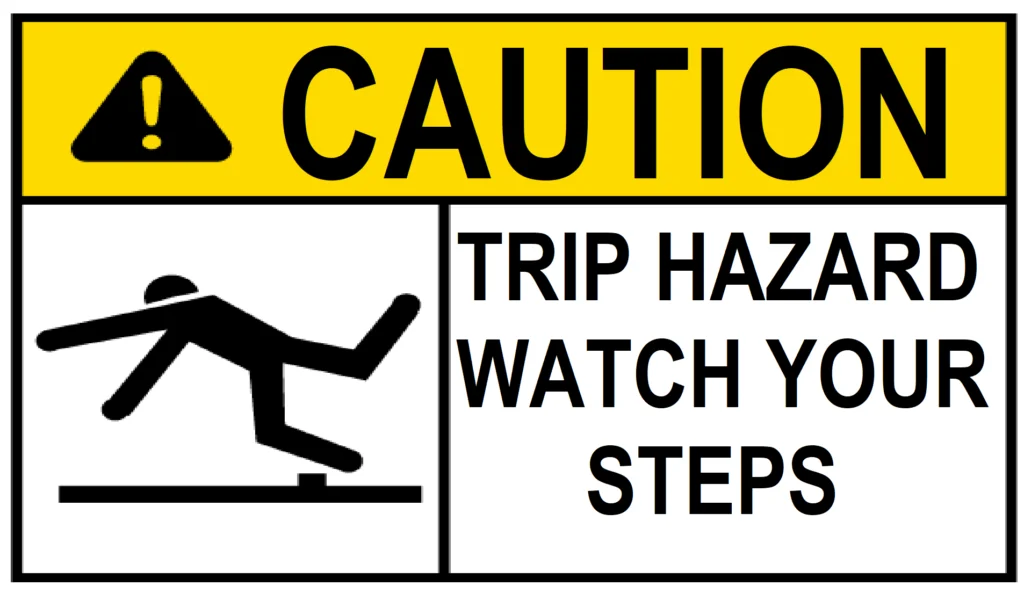
Responsibilities:
Employer responsibilities:.
Employers have a responsibility to control & manage trip hazards. This includes:
- Visiting workplaces and conducting workplace-specific risk assessments .
- To ensure that obligations are fulfilled, it is important to carry out periodic audits as needed.
- Ensure that employees are adequately trained and instructed.
- That suitable arrangements, are in place to maintain site tidiness to a high standard.
- To monitor daily site conditions and ensure that any remedial actions are implemented through his organization.
Employees responsibilities:
Employees also have responsibilities in relation to controlling the risk from trip hazards including:
- Report anything dangerous, e.g. damaged flooring.
- Keep care of the working environment in which they are working;
- Remove all unnecessary tools and equipment from the work site and return them to the stores.
Regulation about trip hazards:
Workplace health, safety and welfare. Workplace (Health, Safety and Welfare) Regulations 1992
OSHA – Walking-Working Surfaces – 1910.22
Share this:
2 thoughts on “what is a trip hazard and how do you prevent them”.
very nice and helpful
Leave a Reply Cancel reply

EHS Daily Advisor
Practical EHS Tips, News & Advice. Updated Daily.
Special Topics in Safety Management
Trip hazards do’s and don’ts.
Updated: Aug 8, 2019
The national statistics on injuries and deaths from workplace slips, trips, and falls are disturbing. Today we’ll give you some actionable advice on keeping your workers from adding to those statistics.
Slips, trips, and falls cannot be taken lightly. Consider:
- In one recent year, more than 800 American workers fell to their deaths. On average, falls account for about 15 percent of all occupational fatalities, second only to motor vehicle accidents.
- In addition, thousands of workers suffer nonfatal injuries from falls every year—many of them temporarily or permanently disabling.
One reason that falls are so common is that there are hazards everywhere. Employees can slip, trip, or fall in production areas, in offices, on stairwells, from ladders, off loading docks–and other places specific to your workplace. An article from our sister website Safety.BLR.com® offers the following advice on trip hazards.
Know What OSHA Says
In recognition of the prevalence of fall hazards and the alarming statistics of fall injuries and fatalities, OSHA has issued several standards for both general industry and construction regarding fall hazards in the workplace. These include regulations for walking and working surfaces; guarding floor and wall openings and holes; stairs; ladder design, inspection, and use; and working at heights.
Being familiar with these regulations can help you identify hazards and take steps to prevent slips, trips, and falls in your workplace.
Recognize the Hazards
Common causes of slips, trips, and falls include:
- Messy, cluttered work areas
- Tools, materials, cords, and other items lying on the floor in places where people walk
- Poor visibility caused by inadequate lighting or burned-out bulbs
- Not watching where you’re going or carrying something you can’t see over
- Running or walking too fast
- Spills and wet floors
- Open drawers (a not-so-obvious trip hazard!)
- Uneven, defective flooring, worn stairs, or worn spots in carpets that nobody has reported or fixed
- Failure to use handrails when going up or down the stairs
- Not enough caution on ladders
- Wearing shoes that are not appropriate for the work space or the job
Eliminate Trip Hazards
Many fall injuries occur on level ground when people trip over unexpected objects in their path. Help eliminate trip hazards by training employees to follow these do’s and don’ts.
- Keep work areas neat and tidy, putting tools, materials, and other items away after use.
- Pick up items off the floor, even if they didn’t put them there.
- Step over or around obstructions, not on them.
- Walk slowly and change directions slowly, especially when carrying a load.
- Watch for changes in floor level—such as a few steps or a ramp up or down.
- Report lighting problems, such as burned-out bulbs, to maintenance right away.
- Use a flashlight if they need more light leaving the facility in the dark.
Don’t:
- Don’t leave boxes, bags, tools, or other materials on the floor.
- Don’t block walkways with hand trucks, equipment, or materials.
- Don’t leave cords or cables in walkways.
- Don’t place anything on stairs.
- Don’t leave drawers open.
Don’t Slip Up on Slip Hazards
It’s easy to slip on wet or smooth surfaces, and down you go. Even a little slip can add up to a big injury. Here are some preventive measures:
- Put up signs or barriers to warn people when floors are wet or hazardous.
- Put down mats near entryways on rainy days.
In addition, instruct employees to:
- Clean up spills, drips, and leaks immediately.
- Wear sensible shoes with nonskid soles, and wipe their feet when they come inside on wet days.
- Shuffle feet on slippery surfaces.
- Report slip hazards if they can’t fix them.
Tomorrow we’ll look at some training recommendations to lower the incidence of slips, trips, and falls at your facility.
5 thoughts on “Trip Hazards Do’s and Don’ts”
- Pingback: Wood to Carpet Repair in Mesa
- Pingback: Warning! Trip Hazards Ahead | Nanoplas
- Pingback: How Small Businesses Are Coping With the Nightmare Of Health And Safety | DAILYRELEASED - The Daily News
Improving Safety culture is the backbone of safety performance indicators.
- Pingback: Could These Tips Help To Make Your Time At Work Safer? | TheSocialMagazine - News And Social Updates
Leave a Reply Cancel reply
Your email address will not be published. Required fields are marked *
Save my name, email, and website in this browser for the next time I comment.
This site uses Akismet to reduce spam. Learn how your comment data is processed .
19th July, 2023
The Simple Guide To Slip And Trip Hazards At Work
In this simple guide to slip and trip hazards at work, we will look at some examples of slip and trip hazards, and the best ways to prevent those hazards from creating slips and trips in your workplace.

Slip and trip hazards probably won't be top of your health and safety concerns at work. But managing slip and trip hazards is a quick, easy (and often cheap) way to improve health and safety in your workplace.
30% of workplace injuries in the UK were caused by slips, trips and falls on the same level in 21/22, according to HSE statistics . That's over 150,000 reported accidents!
And that's just the reported injuries, where people were seriously injured. Most slips and trips probably don't get reported.
In this simple guide to slip and trip hazards at work, you can find some common examples of slip and trip hazards, and how to control them so you and your team don't become one of the 400+ people injured at work each day in the UK.
We'll start with trip hazards.
What is a trip hazard?
A trip hazard is something that could trip you up. The curled-up edge of a mat on your floor is a trip hazard. The cable running across your office is a trip hazard. The sticky-out corner of your desk could be a trip hazard. Anything left on the floor, that shouldn't be there, is probably a trip hazard.
And your trip hazards can trip people up, literally.

The more trip hazards you have, the more likely someone will trip up at some point. Any trip hazard could be an accident waiting to happen .
Examples of trip hazards
We've already discussed some trip hazards above. Before you keep reading, take a quick look around you. Can you see any trip hazards?
How many could you see? I bet you spotted a few. Trip hazards can be found in most places, here are some common examples of trip hazards at work:
- Uneven floors
- Trailing cables
- Obstructions
- Loose flooring
- Loose footwear
- Poor housekeeping
- Poor lighting
- Changes in floor level
- Untied shoelaces
- The straps of a bag
How to control trip hazards
The examples above might seem common, and some even unavoidable, but they shouldn't be ignored. Even small trips can cause serious injuries .
Not every trip hazard will create a huge risk, but by controlling the hazard, you can reduce the risk .
You can control trip hazards by:
- Removing them
- Moving them
- Fixing them
- Highlighting them
Remove trip hazards
If trip hazards can be removed, they should be. Very often, trips are caused by something being left on the floor that shouldn't be there.
And because it's not usually there, no one expects it, and so they trip over it!
For example, discarded packaging from your work might be creating a trip hazard for other people walking through your work area. By keeping your work area tidy and disposing of waste immediately, you help create a safer environment for yourself and others.
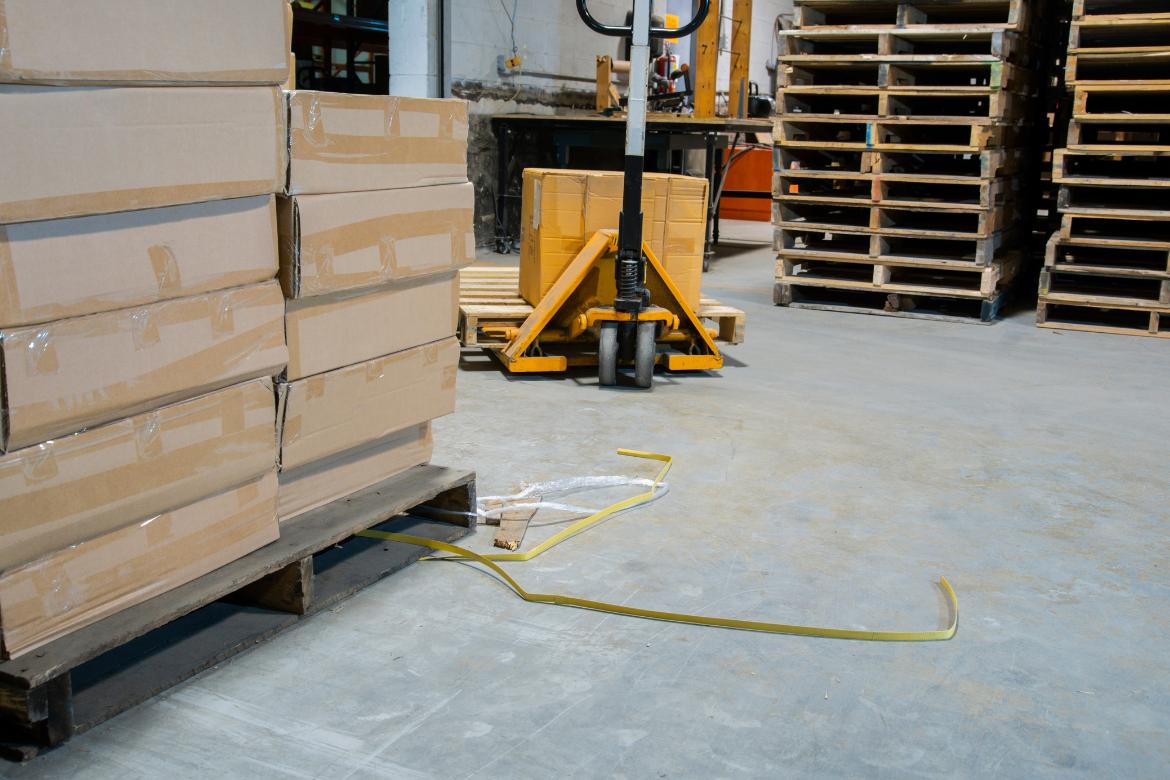
Removing a hazard is the best way to eliminate the risk. You can't trip over something that's not there.
Move trip hazards
You might not be able to remove a trip hazard, as it might be something that's needed.
For example, you can't dispose of a trailing cable if you need to be able to plug in the equipment you are using. But you can re-route the cable so that it doesn't cross a walkway.
Fix trip hazards
Some trip hazards don't need to be removed, but they can be fixed. For example, a pothole in a walkway can be fixed by resurfacing or filling the hole. Or a frayed carpet edge can be replaced.

Sometimes, a temporary fix might be all that's necessary. For example, putting a cover or ramp over a trailing cable or an uneven surface.
Highlight trip hazards
If something can't be removed, you could highlight it instead. Trips usually happen when the hazard is not expected.
If you can warn people of the hazard, e.g. making a stair tread a contrasting colour or making sure that lighting is good in walkways, it helps people to see the hazard before it trips them up.
What is a slip hazard?
A slip hazard is any hazard that creates a risk of slipping. The rainwater coming in on people's shoes is a slip hazard. The floor wet from being mopped is a slip hazard.
And it's not just water and liquids that are slip hazards. The smooth soles of your shoes could be a slip hazard. A dusty floor can be a slip hazard.

Slip hazards, as the name suggests, can make people slip.
Skip hazards are usually created by something temporary, like rain, ice, dust, cleaning, or leaks.
Examples of slip hazards
We've mentioned a few slip hazards above. Before you keep reading, can you think of any more?
Think about your workplace and different weather events or the different activities that happen. Do any slip hazards get created?
How many could you think of? Here are some common examples of slip hazards at work:
- Slippery floors
- Dusty floors
- Loose floor coverings
- Slippery soles
- Icy conditions
How to control slip hazards
Like trip hazards, slip hazards being present are a sign that people could get hurt. Broken legs, backs, arms and even head injuries can happen as a result of slip hazards being uncontrolled.
If you control the hazard, you can reduce the risk, and prevent slips in your workplace.
You can control slip hazards by:
- Preventing them
Prevent slip hazards
Slip hazards can occur due to new situations, rather than being permanent.
For example, a floor might not usually be slippy, but during wet weather, people's shoes bring rainwater in creating a slippery surface. Or during winter puddles may freeze.
While these slip hazards are not permanent, they can be predictable. If you have a tiled floor or smooth floor near an entrance, it's likely to get wet and slippery when people enter with wet shoes.
Using control measures like entrance mats to dry shoes, clearing ice from walkways, and having suitable a footwear policy can ensure that slip hazards are less likely to be created.

Remove slip hazards
Some slip hazards can't easily be predicted, like a burst pipe or a spilt drink or a leaky container. But they should be removed (and the source of the leak or spill fixed) as quickly as possible.
If you have a storage area, or an activity, that contains liquids, providing spill kits and training for what to do if a spill occurs can help make sure that any spill hazards get removed before they slip you up.
Highlight slip hazards
Not every slip hazard can be prevented or removed. For example, when you are mopping a floor, it's probably going to be slippery during the activity.
And if you are doing an activity that creates dust or loose fragments, the floor might be slippery until you are done and can clean it up.

In addition to making sure those doing the activity are wearing suitable footwear, you should also highlight the risk to other people so they don't accidentally step onto a slippery surface.
You could use a simple warning sign, or temporary barriers, depending on the risk level.
Download the free slips and trips toolbox talk template as a short refresher on slips and trips for you and your team.
This article was written by Emma at HASpod . Emma has over 10 years experience in health and safety and BSc (Hons) Construction Management. She is NEBOSH qualified and Tech IOSH.
Better health and safety...
We are here to help you and your business put safety in everything .
Recent posts like this...

Your Near Miss Reporting Procedure Needs These 6 Simple Rules
If you are thinking about starting a near-miss reporting system, you need more than a form. A successful near-miss reporting system starts with good design and ends with results. Here are six simple rules that will help you get the most out of your near-miss reporting procedure.

HSE Improvement Notices Vs Prohibition Notices
If the HSE visit your premises or site and find something wrong, they will expect you to put it right. You may get an enforcement notice, an improvement notice or a prohibition notice. But what are the differences between an improvement notice and a prohibition notice?

What The Law Says About Hot Water At Work
No hot water at work? Hand washing is important for cleanliness, at work and home. As an employee, you have legal rights to certain welfare facilities at work. As an employer, if you don't provide it, you could find yourself in a different kind of hot water with the HSE or local authorities.
Spend less time on paperwork. Start with the free plan today.

- Weill Cornell Medicine

Slips, Trips, and Falls: Understanding, Preventing, and Mitigating Risks
By Gian Joseph, Safety Advisor
As we enter the rainy and cold season, we face several risks , which include slips , trips, and fall s in our day-to-day activities. It is important t o be aware of hazards around us and learn how to properly identify and assess any risks with each step.
Slips, trips, and falls (STFs) are common accidents that can lead to severe injuries. These incidents occur in various settings, from homes and workplaces to public spaces , and i t is essential to understand the causes, consequences, and , most importantly, strategies for prevention and mitigation.
1. Understanding the Dynamics of STFs. STFs are caused by the following .
Insu fficient friction between the shoe and the walking surface. Common causes include wet or greasy floors, spills, and loose debris (Slip and Fall Accidents, 2021).
When a person's foot collides with an object or an uneven surface, it caus es them to lose balance. Typical trip hazards include cluttered walkways, electrical cords, uneven flooring, and damaged or upturned mats (Slip and Fall Accidents, 2021).
2. The Impact of STFs
Slips, trips, and falls have far-reaching effects, affecting individuals and society . Personal i njuries range from minor cuts , bruises, sprains , and abrasions to fractures, dislocations, and head injuries (National Safety Council, 2021). The medical expenses associated with treating STF-related injuries can be substantial , including hospital stays, surgeries, rehabilitation, and ongoing care (National Safety Council, 2021). STFs can result in missed workdays and reduced productivity for both individuals and employers. Workers' compensation claims and absenteeism contribute to economic costs (National Safety Council, 2021). Lastly, t he physical and psychological consequences of STFs can limit mobility, independence, and overall quality of life, especially among older adults ( Sahyoun et al., 2020).
3. Prevention and Mitigation Strategies
Preventing and mitigating STFs involves a combination of awareness, environmental modifications, and education . H ere are some ways you can take precaution s against STFs in your daily activities;
Clear Pathways: Maintain clear, unobstructed walkways by removing clutter and tripping hazards such as cords, toys, and loose rugs (Occupational Safety and Health Administration [OSHA], 2002).
Adequate Lighting: Ensure proper lighting in all areas, both indoors and outdoors, to improve visibility and reduce the risk of tripping over obstacles (OSHA, 2002).
Slip-Resistant Flooring: Install slip-resistant flooring materials, especially in areas prone to moisture, like bathrooms and kitchens (OSHA, 2002).
Footwear: Encourage the use of proper footwear with good traction, especially in environments where slip hazards are prevalent ( Sahyoun et al., 2020).
Handrails and Guardrails: Install and maintain handrails and guardrails on stairs, ramps, and elevated platforms to provide support and prevent falls (OSHA, 2002).
Warning Signs: Use signage to alert individuals to potential hazards, such as wet floors or uneven surfaces (OSHA, 2002).
Education and Training: Promote awareness and provide training to individuals on recognizing and avoiding STF hazards (National Institute for Occupational Safety and Health [NIOSH], 2015).
Workplace Safety: Employers should implement safety protocols and conduct risk assessments in the workplace, addressing potential STF risks (NIOSH, 2015).
Regular Maintenance: Routinely inspect and maintain buildings, walkways, and outdoor areas to identify and address potential hazards promptly (NIOSH, 2015).
4. A Holistic Approach to STF Prevention
Preventing and mitigating STFs require a collaborative approach involving individuals, organizations, and communities:
Individuals : Exercise caution when walking, especially in unfamiliar or potentially hazardous environments. Wear appropriate footwear and take your time, especially in wet or slippery conditions ( Sahyoun et al., 2020).
Employers: Create a safe work environment by identifying and mitigating STF risks. Provide training to employees on safety protocols and the proper use of equipment (OSHA, 2002).
Property Owners and Managers: Ensure properties are well-maintained and free from hazards. Regularly inspect and address issues promptly (NIOSH, 2015).
Government and Local Authorities: Enforce building codes and regulations that promote safety, especially in public spaces and commercial buildings (OSHA, 2002).
Conclusion
Slips, trips, and falls are preventable accidents that carry substantial personal, economic, and societal costs. By comprehending the causes, consequences, and prevention strategies, we can significantly reduce the incidence of STFs and mitigate their impact. Whether at home, at work, or in public spaces, prioritizing safety and fostering awareness about STFs is crucial for the well-being of individuals and communities. Let us strive collectively to create environments where everyone can move safely and confidently, free from the fear of falling.
References:
National Institute for Occupational Safety and Health (NIOSH). (2015). Preventing Slips, Trips, and Falls in Wholesale and Retail Trade Establishments. https://www.cdc.gov/niosh/docs/2015-100/pdfs/2015-100.pdf
National Safety Council. (2021). Injury Facts. https://injuryfacts.nsc.org/work/overview/work-safety-introduction/work-...
Occupational Safety and Health Administration (OSHA). (2002). OSHA Publication 3151-12R. Preventing Slips, Trips, and Falls in Wholesale and Retail Trade Establishments. https://www.osha.gov/Publications/osha3151.pdf
Sahyoun , N. R., Pratt, L. A., & Lentzner , H. (2020). The Changing Profile of Nursing Home Residents: 1985-1997. Journal of Aging and Health, 12(3), 336-363.
Slip and Fall Accidents. (2021). InjuryClaimCoach.com. https://www.injuryclaimcoach.com/slip-and-fall-accidents.html
Please note that the sources cited are accurate as of the time of writing this article. For the most current information, consult authoritative sources and local health authorities.
Go to the staff directory for individual contacts within EHS. You may also use the Weill Cornell Medicine online directory to search for faculty and staff.
Create an EHS Incident
Weill Cornell Medicine Environmental Health and Safety 402 East 67th Street Room LA-0020 New York, NY 10065 Phone: (646) 962-7233 Fax: (646) 962-0288
- SafetySign.com
- Help Center
Prevent Slips, Trips, and Falls
JavaScript is not enabled.
This site requires the use of JavaScript. Please enable JavaScript .
10 Simple Ways to Prevent Slips, Trips, and Falls
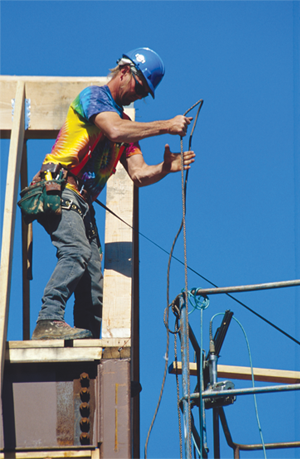
Slips, trips, and falls are the leading causes of time lost in the workplace. The Occupational Safety and Health Administration (OSHA) has cited fall protection standard violations more frequently than any other standard.
These types of hazards are serious issues for workers and employers, but their risk can be minimized with 10 simple ways to prevent slips, trips, and falls. With the risk of injury ranging from a simple sprained ankle to serious injury or death, fall protection and prevention should be everyone’s top priority.
These 10 ways to prevent injury should be considered best practices in every industry.
Like any other safety hazard, slips, trips, and falls can be highlighted during safety training. Make sure that everyone can recognize and avoid slip, trip, and fall hazards and that they use PPE correctly when necessary.
With these types of hazards being common to every type of work environment, it is important to notify supervisors or maintenance crews of slip, trip, and fall hazards when they are present. With so many ways to avoid or lessen the severity of slip, trip, and fall hazards, hopefully businesses will take steps to abate this hazards and less time will be lost by workers.
Your cart is empty.
- Skip to main content
- Skip to site information
- Departments
Language selection
- Français

Scheduled maintenance - Thursday, July 12 at 5:00 PM EDT
We expect this update to take about an hour. Access to this website will be unavailable during this time.
Prevention of Slips, Trips and Falls
On this page, how do falls happen, how to prevent falls due to slips and trips, what can you do to avoid falling at work.
Statistics show that the majority (67%) of falls happen on the same level resulting from slips and trips. The remaining 30% are falls from a height. This document will summarize information on "falls on the same level" (slips and trips). Falls from an elevation, such as falls from ladders, roofs, down stairs or from jumping to a lower level, etc., is discussed in other documents since each type of fall must be assessed as part of a fall prevention program .
Slips happen where there is too little friction or traction between the footwear and the walking surface. Common causes of slips are:
- wet or oily surfaces
- occasional spills
- weather hazards
- loose, unanchored rugs or mats
- flooring or other walking surfaces that do not have the same degree of traction in all areas
Trips happen when your foot collides (strikes, hits) an object causing you to lose balance and, eventually fall. Common causes of tripping are:
- obstructed view
- poor lighting
- clutter in your way
- wrinkled carpeting
- uncovered cables
- bottom drawers not being closed
- uneven (steps, thresholds) walking surfaces
Both slips and trips result from unintended or unexpected change in the contact between the feet and the ground or walking surface. This fact shows that good housekeeping, quality of walking surfaces (flooring), selection of proper footwear, and appropriate pace of walking are critical for preventing fall incidents.
Housekeeping
Good housekeeping is the first and the most important (fundamental) level of preventing falls due to slips and trips. It includes:
- cleaning all spills immediately
- marking spills and wet areas
- mopping or sweeping debris from floors
- removing obstacles from walkways and always keeping walkways free of clutter
- securing (tacking, taping, etc.) mats, rugs and carpets that do not lay flat
- always closing file cabinet or storage drawers
- covering cables that cross walkways
- keeping working areas and walkways well lit
- replacing used light bulbs and faulty switches
Without good housekeeping practices, any other preventive measures such as installation of sophisticated flooring, specialty footwear or training on techniques of walking and safe falling will never be fully effective.
For more information about effective housekeeping, visit the OSH Answers document on Workplace Housekeeping - Basic Guide .
Changing or modifying walking surfaces is the next level of preventing slip and trips. Recoating or replacing floors, installing mats, pressure-sensitive abrasive strips or abrasive-filled paint-on coating and metal or synthetic decking can further improve safety and reduce the risk of falling. However, it is critical to remember that high-tech flooring requires good housekeeping as much as any other flooring. In addition, resilient, non-slippery flooring prevents or reduces foot fatigue and contributes to slip-prevention measures.
In workplaces where floors may be oily or wet or where workers spend considerable time outdoors, prevention of fall incidents should focus on selecting proper footwear. Since there is no footwear with anti-slip properties for every condition, consultation with manufacturers is highly recommended.
Properly fitting footwear increases comfort and prevents fatigue which, in turn, improves safety for the employee. For more information on footwear visit the OSH Answers document on Safety Footwear .
You can reduce the risk of slipping on wet flooring by:
- taking your time and paying attention to where you are going
- adjusting your stride to a pace that is suitable for the walking surface and the tasks you are doing
- walking with the feet pointed slightly outward
- making wide turns at corners
You can reduce the risk of tripping by:
- keeping walking areas clear from clutter or obstructions
- keeping flooring in good condition
- always using installed light sources that provide sufficient light for your tasks
- using a flashlight if you enter a dark room where there is no light
- making sure that things you are carrying or pushing do not prevent you from seeing any obstructions, spills, etc.
- Fact sheet last revised: 2023-03-28

An official website of the United States government.
Here’s how you know
The .gov means it’s official. Federal government websites often end in .gov or .mil. Before sharing sensitive information, make sure you’re on a federal government site.
The site is secure. The https:// ensures that you are connecting to the official website and that any information you provide is encrypted and transmitted securely.
Occupational Safety and Health Administration
- 中文(简体) (Chinese-Simplified)
- 繁體中文 (Chinese-Traditional)
- Kreyòl ayisyen (Haitian Creole)
- 한국어 (Korean)
- Español (Spanish)
- Filipino/Tagalog
- Tiếng Việt (Vietnamese)
- By Standard Number
- 1910.22 - General requirements.
- Part Number: 1910
- Part Number Title: Occupational Safety and Health Standards
- Subpart: 1910 Subpart D
- Subpart Title: Walking-Working Surfaces
- Standard Number: 1910.22
- Title: General requirements.
- GPO Source: e-CFR
Hazardous conditions on walking-working surfaces are corrected or repaired before an employee uses the walking-working surface again. If the correction or repair cannot be made immediately, the hazard must be guarded to prevent employees from using the walking-working surface until the hazard is corrected or repaired; and
[81 FR 82983, Nov. 18, 2016]


Trip hazards in the workplace
Although they are perhaps less dramatic than some of the other risk factors frontline workers face, trip hazards are no less of a threat. In fact, they are some of the most common workplace dangers out there.
According to the Bureau of Labor Statistics (BLS), many trips that don’t result in a fall lead to injuries. In 2020, there were 15,930 recorded trips that did not end with a fall but still caused an employee to miss work.
These types of nonfatal injuries cost companies millions of dollars each year. But they’re preventable. Reduce the prevalence of trip hazards in your facility by auditing often and following these best practices.
Common trip hazards
Compared to other workplace hazards, trip hazards are relatively easy to spot. So, you might wonder why they’re so common. The reason is because many trip hazards blend in with the operation. They come from standard objects and areas that most people overlook.
If your facility has been running for a while, you might not notice many hazards during your safety walks. The longer a hazard exists without being addressed, the more commonplace it will seem. The key is to fix issues as soon as you see them.
Some of the most common trip hazards include:
- Loose cords and cables
- Unmanaged clutter
- Missing handrails
- Unsecured floor mats, tiles, or carpeting
- Poor lighting
- Uneven walkways
- Open cabinets and doors
- Incorrectly laced shoes or boots
The biggest source of these issues is lackluster housekeeping and hazard management. While it might be easy to blame those problems on the cleaning staff, this would be incorrect.
In most cases, trip hazards come from daily operations. And they are often the result of careless and mindless activity. Safety leaders, operations managers, frontline workers, and any other people who are directly involved in the operation have a responsibility to find, eliminate, and prevent trip hazards.
Best practices for eliminating trip hazards
A strong safety culture can help you reduce trip hazards in the workplace. If everyone from the general manager to frontline employees proactively eliminates hazards, your trip incident rate will likely drop.
Implement the following best practices to remove trip hazards, improve your site’s cleanliness, and keep workers safe.
Clean regularly and thoroughly
Cleanliness and safety are closely related. A messy facility is likely to be full of trip hazards. At the very least, you should have a regular cleaning schedule. This should include a dedicated cleaning staff. Depending on the size of your operation, you may need an entire team or just a few workers.
The cleaning schedule should dictate:
- What areas need to be cleaned
- How often areas need to be cleaned
- The person or people responsible for cleaning each area
Audit the execution of this cleaning schedule often to ensure all items are being followed.
Address bad behaviors
A major part of facility safety is individual behavior. If your workers do not keep their workstations clean, there will be many more trip hazards to avoid.
Combat this issue by addressing bad behaviors at once. Letting employees get away with untidiness has several negative effects. It weakens your safety culture. It makes the facility more dangerous. And it hinders productivity.
Aside from cleanliness, it’s also important that workers follow their safety training. Make sure to remind employees not to run in the facility. Also, ensure that employees don’t text and walk at the same time, as this makes them more likely to trip over objects and workstation setups.
Manage the workspace layout
Oftentimes, a hazard cannot be removed. This means that you will have to make the workspace safer by reorganizing it. When performing a safety walk, look for issues with 5S. Note which areas are prone to collect clutter. Is there a better way to store the clutter? Consider adding a pallet drop zone, organizational bins, or storage racks to keep the area clear. Once you’ve implemented the change, don’t forget to update the floor 5S to match.
Track action items
Have you ever seen a trip hazard one day, fixed it, and then seen it again the very next day? This is a sign that you need more effective action items .
For example, if you see a broom on the floor, it is easy to simply pick it up and put it where it goes. But if it keeps ending up in the same place, you need to consider that the storage area might not be effective. Try moving the storage location to a more convenient area. This may prevent the hazard from resurfacing on a regular basis.
This same approach works for loose rugs and mats. Certain rugs simply don’t stay put. Every time it rains, employees come into the facility only to trip dramatically in the front entrance. When this keeps happening, you should try a different type of rug or mat.
Whenever you implement these types of changes, document them. Make sure to log action items for each safety walk and process hazard analysis . If you input the same hazard in a future audit, come up with a new action item. Doing this allows you to keep a detailed log of all your solutions. That way, if a recordable trip injury occurs, you have a demonstrated history of trying to address the issue.
Other posts you might like…

Why the ROI of safety isn’t always obvious
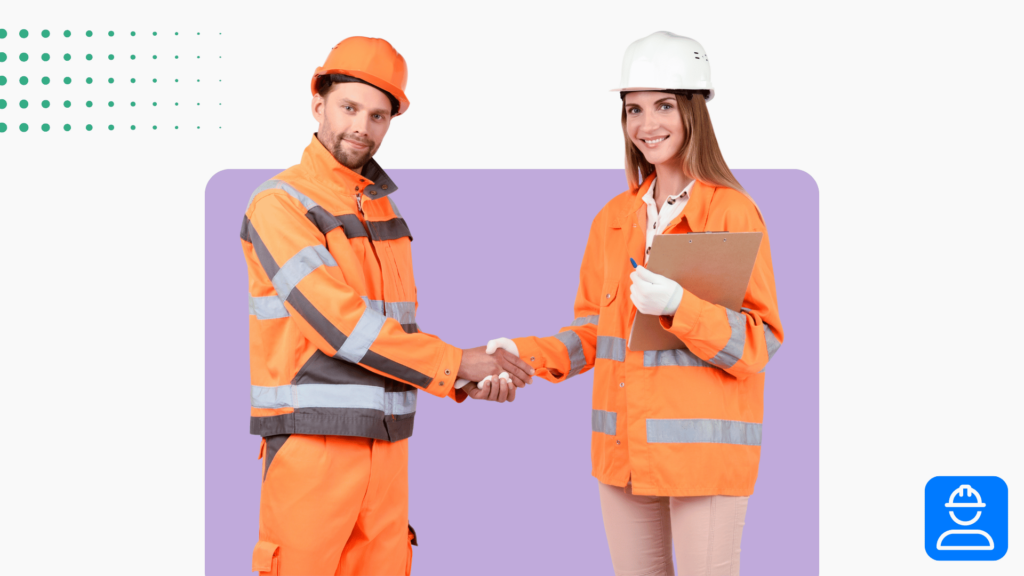
Try one of these strategies to get promoted in EHS
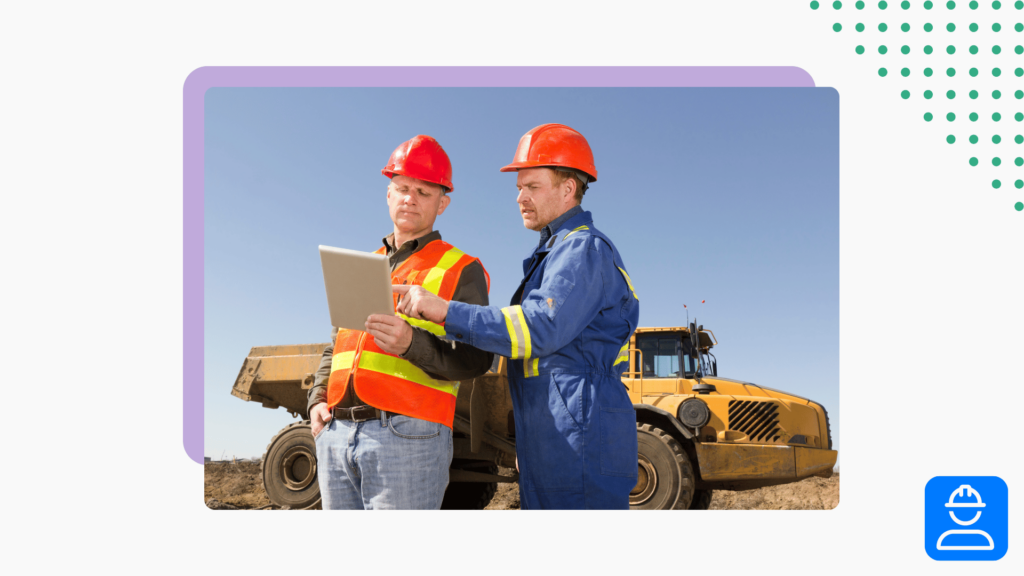
The future of the EHS software market
8 adjustments to make at home to help prevent trips and falls
A gerontology professor weighs in
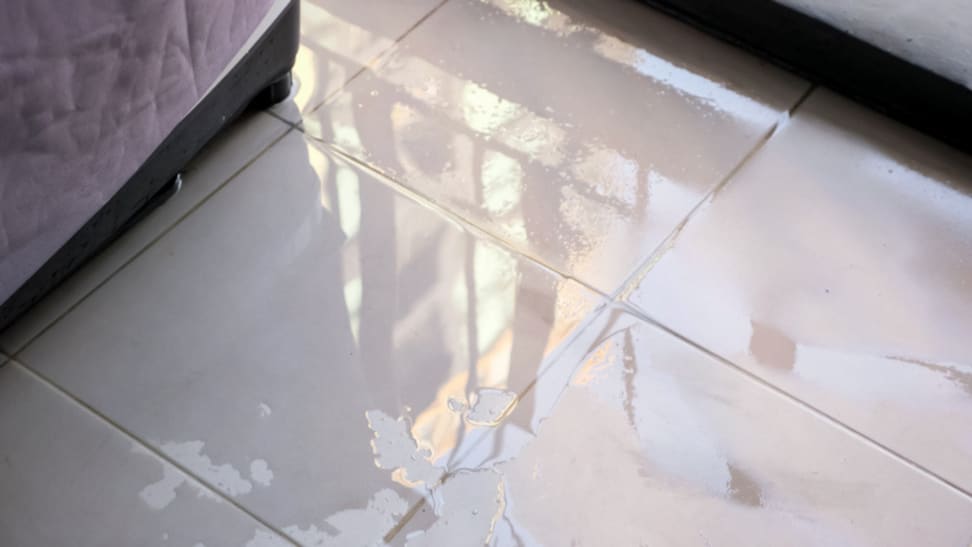
Updated August 4, 2021
Products are chosen independently by our editors. Purchases made through our links may earn us a commission.
Jon Pynoos will never forget the home assessment where an elderly mom climbed to the top of a wobbly ladder with no support.
“She reached into the highest cabinet to pull out a very heavy bowl,” says the PhD, co-director of the Fall Prevention Center of Excellence, and a gerontology professor at the University of Southern California, describing the incident as the seconds ticked by slowly. “Her son covered his eyes with his hands the whole time—he couldn’t believe it.”
Pynoos and Certified Aging in Place (CAPS) contractors offer insights on the top ways to eliminate fall and trip risks for seniors at home.
1. Keep necessities low and horizontal

With low, horizontal cabinets everything you need is at the tip of your fingers.
Pynoos suggests removing the need to use a ladder or a step stool in the first place, and to get creative by thinking more horizontally than vertically.
“Ladders in and of themselves are risky,” he says. “Anything seniors use routinely should be put on special lower shelves. And, they could think about using items that aren’t as heavy as they age.”
Installing bright, color-coded drawers in cabinets—especially ones that pull out—is something Dan Bawden recommends for a quick storage upgrade. The president of Legal Eagle Contractors in Texas says the color contrast makes it easier for those with strained eyesight to differentiate what’s where; plus, seniors won’t have to scramble in the kitchen to reach the pan they need which is in the back.
“That’s Murphy’s Law,” jokes Bawden.
2. Downsize to cooking for one

Utilizing your microwave not only reduces food waste, but also cuts down on clean up afterwards.
Using a microwave regularly is not only easier, but can prevent lifting heavy, hot pans from the oven to a higher surface like a countertop or table. Microwaves can be easily plugged in on a countertop, too, or installed easily underneath a counter by a contractor.
Reducing the number of dishes one has that need to be stacked, too, can go a long way to simply reusing the same ones over and over, advises Pynoos.
3. Prevent bathroom hazards

Grab bars offer more stability if needed in an emergency situation.
He advises having a professional install grab bars and a higher, “comfort height” toilet.
Another simple fix is putting in a bath mat—but only those with non-slip grips. Ideally, though, seniors would update their flooring when appropriate.
Larger grout and some of the newer, slip-resistant ceramic or porcelain options (or even affordable and cushier vinyl flooring) is what Bawden recommends.
4. Keep your floor as level as possible

Accent and area rugs that aren't secured to the ground pose a serious threat to seniors.
Carpet isn’t the be-all and end-all to brace a fall, says Pynoos — in fact, it can sometimes be worse than other flooring options.
“People like fluffy designer carpets, but if you’re thinking of the future, the flatter the better,” he explains. “Everything should be as flat and as level as possible, because you won’t see wear and tear, wheelchairs and walkers can move over it, and you won’t trip.”
It’s also best to get rid of accent rugs that aren’t permanently installed. “I was in a really nice home where a lady put a carpet on the carpet to cover a stain—having those edges there to trip over isn’t worth the risk,” Pynoos says.
5. Beware of pets

Small companions like dogs and cats can easily be overlooked in dim lighting.
It may seem like common sense, but the same kind of companion that can create small messes can also lead to bigger trouble. Pets—and their toys and food—are “fall hazards running around,” says Pynoos.
He advises putting a small bell on animals’ collars.
Since kibble and water can be “slobbered all over,” having a mat for food that’s not in a common pathway is ideal.
And, as for toys, Pynoos—who has three dogs—makes a concerted effort to put away all of their playthings at night in a special box. Bright colors are best, especially reds and yellows, since seniors tend to be color-blind in the blue/green range.
6. Invest in longer lasting lights
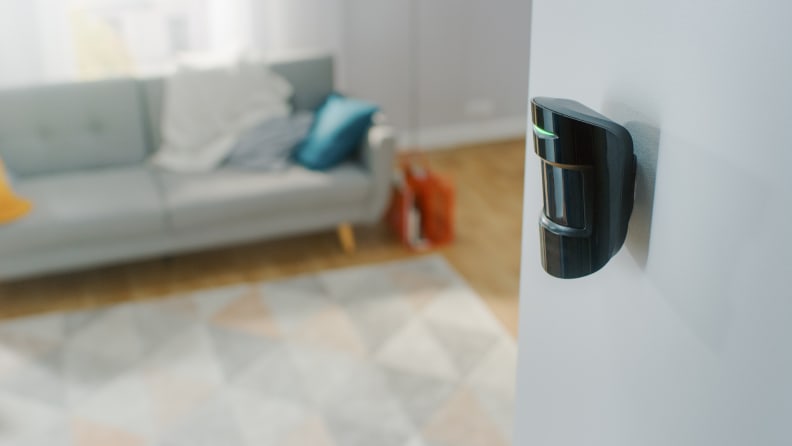
Motion sensor lights save energy and are more accessible to seniors and those with disabilities.
Going cordless can also be a huge help, because it reduces tripping risks, says David Karas, a contractor based in Massachusetts. But, like Pynoos, he also cautions that glossy flooring might cause a reflective glare with brighter lights.
Pynoos says that “one of the best” things to have a professional install is motion-sensor strip lights for those twilight trips to the bathroom. Another (more inexpensive) fix is battery-operated task lights that have adhesive strips that homeowners can affix themselves.
7. Keep your outdoor area bright and steady
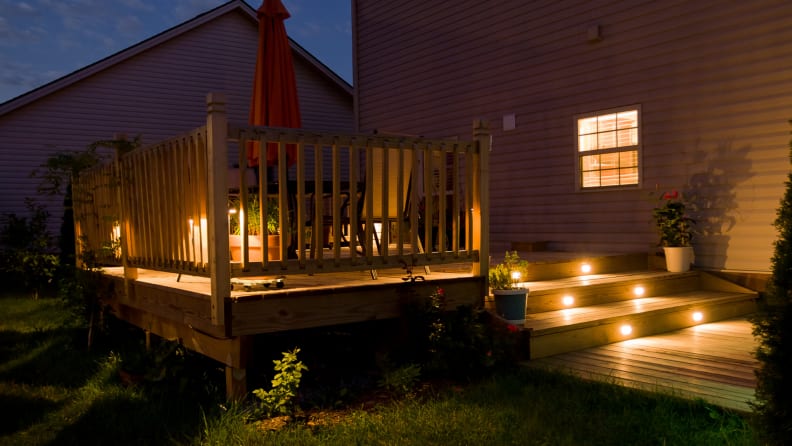
Lighting the exterior of your home is equally as important as the interior of your home.
Proper lighting should extend to both inside and outside the home, says Pynoos—where weatherization is key, especially at thresholds. It’s there that going from a dry to a wet surface can be slippery, and raised surfaces can create trip hazards.
“It’s best to have a light on the first and second step, if you can have it both inside and outside your house, the better,” he advises.
He advises investing in upgrading exterior stairs that may have cracks or chips, and also adding handrails on both sides that arthritis-prone seniors can grip.
8. Follow doctor’s orders

Taking the advice of a trusted doctor before adjusting your home for safety is the smartest route to take.
Neither retirees nor their loved ones without training should expect to be experts when it comes to home safety assessments, says Pynoos.
He recommends getting a referral from a doctor for an occupational therapist to come on-site and perform assessments. The service is usually covered by insurance.
Falls are also not strictly related to seniors’ environment, he advises.
“The reality of falls is we can do everything to improve the environment, but falls are multi-causal. Your doctor should ask you what medications you take and whether they make you dizzy. They should monitor your gait and see if you need a walker or a cane,” he says. “Safety is not as ‘easy’ as making a bathroom wheelchair accessible.”
Related content

Prices were accurate at the time this article was published but may change over time.
Sign up for our newsletter.
Enter your email:
Thanks for signing up.
Contact | Subscribe | Media centre

- Lifting, pushing and pulling
- Psychosocial hazards
- Working at heights
- Crystalline silica and silicosis
Managing health and safety
- Identify, assess and control hazards
- Safety data sheets
- Personal protective equipment
- Emergency plans and procedures
- Incident reporting
Industry and business
- Construction
- Small business
- Agriculture
- Gig economy
The Commonwealth, states and territories regulate and enforce WHS laws.
Find your Regulator
Model WHS Laws
We created the model WHS laws in 2011.
- Model WHS Act
- Model WHS Regulations
- Duties under Model WHS laws
- Codes of Practice
- Legislation
WHS laws in your jurisdiction
Contact your regulator
Data and Research
We collect, analyse and publish data and information on work health and safety and workers' compensation.
See our data
- Work-related fatalities
- Work-related injuries
- Work-related diseases
- Return to Work
- Explore our data
- About our data
- Industry benchmarking
- Research by industry or topic
See our latest Key work health and safety statistics
explore our data
Workers' Compensation
We develop national policy and strategy about workers' compensation.
- Workers’ compensation
- Comparing workers' compensation in Australia
- National Return to Work Strategy
- Deemed diseases
- Permanent impairment
- Workers' compensation for psychological injury

Read the Strategy
Resources and Publications
We publish a wide range of resources covering many work health and safety topics.
- Codes of practice
- Video and audio
- Corporate publications
Media centre
- Media releases
- News update
Read our Codes of Practice
read the codes
Slips, trips and falls
Each year slips, trips and falls cause thousands of preventable injuries.
- Safety by topic
The most common ones are:
- musculoskeletal injuries (injuries to muscles, nerves, tendons, joints, cartilage and spinal discs)
- bruises
- fractures
- dislocations.
More serious injuries and deaths can also happen.
Slip, trip and fall hazards
Some things that can cause you to slip are:
- the wrong footwear
- polished, wet or greasy floors.
In most cases, people trip on low obstacles that are hard to spot, such as:
- uneven edges in flooring
- loose mats
- open drawers
- untidy tools, or
- electrical cables.
Falls can result from a slip or trip, but many occur from low heights. For example:
- steps
- stairs
- kerbs,
- holes
- ditches, or
- wet or slippery surfaces.
WHS duties
As a person conducting a business or undertaking (PCBU), you must always aim to eliminate the risk of slips, trips and falls, so far as is reasonably practicable. If that is not possible, you must minimise risks so far as is reasonably practicable.
You must identify hazards, and assess and control risks. Think about your:
- work areas
- work procedures
- tools
- equipment.
Consulting with workers can help you find better and easier ways to identify and minimise risks. You should also review control measures to ensure they are working as planned.
Workers also have duties, including taking reasonable care for their own health and safety.
Managing risks
The best way to manage the risk of slips, trips and falls is to eliminate hazards at the design stage of the workplace.
If you can’t eliminate the risk, you must minimise it so far as is reasonably practicable.
Designing safe workplaces
In designing floors, stairs, lighting, drainage and storage:
- keep floors at a single level and use slip-resistant floor coverings
- install extra power points to avoid trip hazards from trailing cords
- ensure all areas are well lit, particularly stairwells
- have good drainage and slip resistant grates
- have lots of storage, so things aren’t left in walkways.
Safe work procedures
Work procedures can also impact on the incidence of slips, trips and falls. Have clear procedures to:
- remove rubbish to avoid trip hazards
- return tools and other items to their storage areas after use
- report and clean spills
Keep the workplace clean
All workers share responsibility for keeping the workplace clean and tidy.
Make sure you:
- have adequate rubbish and recycling bins
- have cleaning schedules in place
- dry floors after cleaning
- don’t have cords on walkway or work area floors.
Training
Training helps workers become more aware of slip and trip hazards and helps to prevent injuries.
Training should include:
- awareness of slip and trip hazards
- identifying effective control measures
- duties of workers.
Using personal protective equipment (PPE)
As a PCBU, you should only use PPE:
- after you have implemented all other possible control measures.
- as an interim measure until you can use a better control measure
- as a backup in addition to other control measures.
Slip-resistant footwear
Slip-resistant footwear is a type of PPE.
Slip-resistant footwear should be appropriate for the work and workers must wear it properly.
In wet conditions, the shoe sole tread should:
- be deep enough to help penetrate the surface water
- make direct contact with the floor.
In dry conditions, the shoe sole tread:
- pattern should be a flat bottom construction
- should grip the floor with maximum contact area.
Types of slip-resistant footwear
Urethane and rubber soles are more slip resistant than vinyl and leather soles.
Sole materials that have tiny cell like features are slip resistant.
Supporting information
- Model Code of Practice: How to manage work health and safety risks
- Model Code of Practice: Managing the work environment and facilities
- Slips and trips at the workplace fact sheet
- The interactive safe work method statement (SWMS) tool provides information on preparing, using and reviewing SWMS for high risk construction work.
News related to this topic
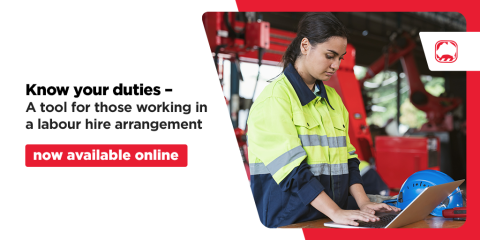
01 Dec 2023 | News
Do you use labour hire?
Read more >
See all news
Further Advice
SWA is not a regulator and cannot advise you about WHS issues in the workplace. If you need help please contact your state or territory work health and safety authority .
We develop national policy relating to WHS and workers' compensation.
1-800-240-8653
Never trip again on your pathway in life, keeping california safe with expert concrete repair, handling concrete repairs throughout california, why choose trip hazard.
At Trip Hazard, we take a scientific approach to our responsibilities. We use state-of-the-art equipment to make sure we get the job done right the first time, without wasting time. It just makes sense, because it’s best for our clients and our team.
01 Removing Trip Hazards
This is where we got started! We offer trip hazard removal, including:
- Grinding uneven surfaces
- Leveling sunken concrete slabs
- Sealing cracks
- Repairing or adding curbs
- Pruning tree roots to prevent future slab heave
These repairs and fixes ensure that your sidewalks and other surfaces are safe for everyone.
02 Ensuring ADA Compliance
Sometimes, removing trip hazards isn’t enough. If you need a space to be disability-friendly and ADA-compliant, you may need significant concrete work done. At Trip Hazard, we can help make your location wheelchair-friendly by:
- Adding concrete wheelchair ramps
- Cutting curbs to provide wheelchair access to the road
- Adding or expanding concrete paths around your facility
We have in-depth experience assisting home and business owners with ADA compliance, so we’re fully prepared to ensure your new additions meet the letter and spirit of the law.
03 Fixing and Pouring Driveways & Patios
We can also do large-scale work. Whether you want to add a new patio, driveway, or roundabout to your property, or fix up the ones you have, we can help. We offer efficient and effective planning and pouring services for these items.
Innovative Concrete Repair, Replacement, And Pouring Company
Today, Trip Hazard handles concrete repairs around California, with more than a dozen locations in California and plans to expand into other states in the future. Whether you’re looking for a trustworthy and reliable company to handle your damaged and dangerous sidewalks, curbs, or driveway, or you’re an experienced concrete professional looking to level up your career, Trip Hazard is here to help.
Our Services
Ornare integer cras scelerisque id eu ut nisl. Accumsan turpis tellus consectetur viverra cursus ut quis in ut. Consequat nec vulputate tincidunt vestibulum. Erat magna viverra tempor praesent mi pretium. Vitae tortor gravida amet in massa.
Repair And Replace
See all services, wheelchair/ada ramps, repair and replace concrete walkways, our clients.
We enhance community appeal by collaborating with HOAs on hazard identification and maintenance plans in common concrete areas.
Partnering with apartments, we boost residents' living experience by beautifying concrete elements and promptly addressing repairs.
Contractors
Serving as an extension to construction teams, we provide specialized concrete services, ensuring seamless execution for successful projects.
Get A Quote
Testimonials.
Trip Hazard is the best, I have worked with them on many different projects for my job. They think 10 steps ahead and are willing to work with you on specific needs and also give you an Outlook for the years to come. I call them the Swiss army knife company because they do so much..."
Trip Hazard never fails to amaze me with the quality of people they employ. Good vendors are hard to find, but they make completing projects easy. From their proposal process to contract completion to troubleshooting issues in the field, they are my first call every time. I truly appreciate their attention to detail. I highly recommend them!
Sorry for the delay in response! This walkthrough is so great. It is so helpful to get a visual especially when I am stuck at home for shelter in place! Great job as always…. Next up, Kings Valley.
I am very happy with the overall service and final product… Everything looks very good!
Community Manager (Serenity)
The Trip Hazard team has been great to work with. Their communication and attentiveness is the epitome of what customer service should be like. They were also able to iron out any issues immediately and most importantly completed our project ahead of schedule. Not that I want any more trip hazard repairs, however I would love to work with the Trip Hazard team again. Thanks Trip Hazard!
Best Regards,
Laurie Himebaugh
Please feel free to share this with your boss. I just wanted to drop a note and say how awesome it has been working with you and Trip Hazards! During this pandemic, you have been extra supportive and helpful. Your team went above and beyond at Pt. Reyes provided a virtual walk-through of the property after work was completed. Your follow up has been so great on the proposals which helps me keep my sites in order and on track for approvals. You are always willing and accommodating to have a phone call to go over proposals and answer any questions our teams have, including helping us navigate resident notification of when they need to move vehicles to accommodate work. I have recommended YOU not only to my current co-workers but also to past co-workers at other companies I have previously worked for. Our working relationship is amazing and I just cannot thank you enough!
Patrick Gonzales
Honestly working with you and the team made life here so much easier.
Best Regards,
Michael & Phyllis
The Trip Hazard team was wonderful. Their process was fascinating—they explained everything— they worked hard in extremely hot weather, and completed the work as scheduled with impeccable clean up— we are very pleased with the entire experience.
Yesterday we moved the cars back into the garage!
triphazard.usa
Trip Hazard specializes in making America safe, by removing concrete hazards. Now you can enjoy your🚶🏼♀️WALK🚶🏻♂️without always looking down.
Quick Links
- Privacy Policy
- Digital Marketing By 6S Digital
Automated page speed optimizations for fast site performance
- Cast & crew
- User reviews

Episode list
Trip hazard.

S1.E1 ∙ The Lake District

S1.E2 ∙ Whitby

S1.E3 ∙ Norwich

S1.E4 ∙ Anglesey
Contribute to this page.

- See more gaps
- Learn more about contributing
More from this title
More to explore, recently viewed.
People Search
Idc natural hazards 3-day field trip to galtür.
A visit to Galtür 25 years after the avalanche disaster of 1999
from 03.-05.10.2024
The main target of the interdisciplinary field trip is the exploration of past and future hot spots of natural hazard processes in the Tyrolean Oberland, including new infrastructure buildings both in the vicinity and on the way to the village Galtür.
Ongoing global temperature rise, which is particularly pronounced in the Alpine region, has led to significant effects on glaciers and permafrost. Glacier retreat has become a prominent indicator of climate change. Besides significantly impacting runoff, these glacial changes are also heavily influencing sediment transport processes. As this year marks the tragic 25th anniversary of the avalanche disaster in Galtür in 1999, we focus on the high mountains areas of the Tyrolean Oberland and the Jamtal, where unique in-situ views of these changing processes can be recognized.
The travel to Jamtal with our stay at Jamtal hut, visit of Fluchthorn deposits and the Jamtal glacier foreland, will be accompanied by further short stops along the way at hydro power plant construction site in Kühtai and the historic Tschirgant and Habichen rock slide in the Oetz valley. The combination of studying historic natural hazards with most recent ones, the demands of combination of geotechnical, hydraulic and geological expertise for hydropower plant construction, as well as current monitoring, investigation and mitigation methods of natural hazards will allow us to get a deeper understanding of natural hazards in general and to broaden our horizon across disciplines. As an overarching theme the observed processes will also be discussed in the context of climate change during the excursion.
Besides this, the interdisciplinary field trip will provide an opportunity for mutual exchange on our individual research topics. To allow additional students to experience this unique opportunity, we would like to invite up to 9 additional PhD (and Master) students from the University of Innsbruck to join us (up to a total group size of 15 people). The interdisciplinary exchange of the excursion will further be expanded with the invitation of experts from different fields and fellow researchers. Together with the invitation of the additional PhD (and Master) students, the field trip will be a place for fruitful discussions and enable possible future cooperations.
Accommodation is reserved at the Jamtal hut for two nights, as well as two electric cars and an e-bus. In case of bad weather we may have to depart on alternative days and drive with private cars. Transport and accommodation costs (including 2x breakfast and 1x dinner at Jamtal hut) are covered by the DP Research Grant 2024. Other food costs and other expenses are not covered.
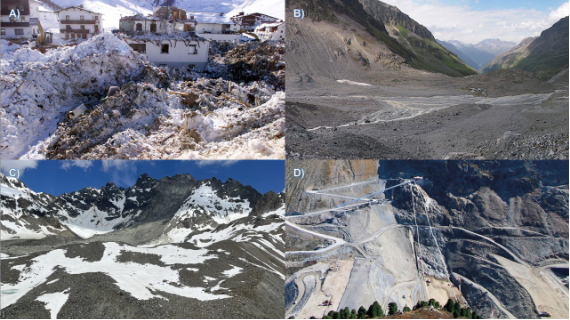
Figure 1: A) Galtür avanlanche disaster 1999: APA/HANS KLAUS TECHT, https://tirol.orf.at/stories/3245365/; B) Jamtalferner outwash plain: https://www.mountainresearch.at/HiddenIce/; C) Fluchthorn: https://www.uibk.ac.at/de/newsroom/2023/3dlaserscanning- zeigt-ausmass-des-fluchthorn-bergsturzes/; D) Kühtai Dam: Perzlmaier & Holzmann 2023, Österr Wasser- und Abfallw 2023 75:210–218.
Site description:
- The Kühtai pumped-storage project of TIWAG-Tiroler Wasserkraft AG, which is currently under construction expands the existing Sellrain-Silz group. Part of the project is the new Kühtai reservoir, which will be connected to the existing Finstertal reservoir via the new Kühtai 2 power plant and the associated headrace tunnel. In the course of the construction work in Längental, which has been ongoing since 2020, work has also begun on the construction of the Kühtai dam (Perzlmaier & Holzmann, 2023).
- Piburgersee is composed of lacustrine mud with low background sedimentation rates (0.24 mm/year) during the Holocene.The lake shows a variety of different types of eventbeds, such as numerous flood deposits, three debrite intervals and a 2.5 m thick turbidite induced by a local rockfall impacting the lake floor at ~2.9 ka BP. Also a debrite interval is linked to the activity of the nearby Habichen rockslide at ~4.4 ka BP. Furthermore, earthquake-induced soft sediment deformation structures are found within the lake record, which are strikingly linked to large rockslides within the lakes vicinity such as Eibsee and Fernpass, as well as Tschirgant and Haiming, coincide within the overlap-age ranges of the paleo-earthquakes recorded in both lakes at 4.1 ± 0.1 and 3.0 ± 0.2 ka BP, respectively (Oswald et al. 2021).The Tschirgant rock avalanche is situated ~40km west of Innsbruck at the river mouth of the Ötz River into Inn River. Below the summit of Mount Tschirgant [2370 meters above sea level] is the location of the detachment area of the rock avalanche, the ‘Weißwand’ cliff more than 1400 m in height, with a volume of up to 230 million m3. Minimum U/Th-ages of calcite precipitations within the rock avalanche deposits, result in a probable event age of ~3.01 ± 0.10 ka BP (Ostermann et al., 2016). The rockslide deposits of Habichen are the end of the cascades of the Ötz river (Achstürze, approximately 800 m a.s.l.) caused by the Habichen rockslide, were investigated by several authors but not in detail. The failing rock masses first propagated in NE-direction towards a bedrock obstacle composed of biotite gneisses, which forced the debris to travel further on towards the East. The rockslide masses ran up the eastern valley flanks for about 100 m, and dammed the Ötz valley (Ostermann and Prager, 2014). Based on backwater sediments in the main valley the Habichen rockslide activity occurred ~6.0 – 3.4 BP (Prager et al., 2008) and dated to 4.4 ± 0.09 ka BP based on Piburgersee (Oswald et al. 2021).
- In the Jamtal Valley the landscape is currently changing drastically in response to climate change. In the upper part of the valley lies a proglacial outwash plain which is investigated in the Hidden.Ice project (Helfticht et al. 2023). Beyond investigating the temporal evolution of sediment-rich, proglacial zones through remote sensing datasets, this project expands the monitoring capabilities of the wellestablished Long Term Ecosystem Research Site (LTER) site of the Jamtalferner to build up long-term datasets.
- The Fluchthorn rock slope failure is a significant event that occurred on June 12, 2023. First results of Krautblatter et al. (2024) show a detachment of approximately ~1 million cubic meters of rock from the 3399 meter-high summit resulted in a rock avalanche, which also eroded around 120,000 cubic meters of ice. The findings show the interplay of tectonic, geological pre-failure, and cryospheric factors in shaping the landscape and contributing to such events in mountainous regions impacted by warming climate (Krautblatter et al., 2024).
- On February 23, 1999, an avalanche killed 31 people, which broke loose from the slope north of Galtür below the ridge between Grieskopf and Grieskogel. The avalanche scarp area was located at an altitude of over 2,700 meters, leading to a speed of more than 200 km/h and a cloud of dust of around 100 meters high over a width of 400 meters. More than 300,000 tons of snow were set in motion and partially swept away eleven houses in the main affected district of Winkl (Höller 2007, Turnbull and Bartelt,. 2003, ORF 2024). The month February of 1999 is referred to as an avalanche cycle. The beginning of the year was characterized by a dry and sunny January. However, conditions changed dramatically at the end of January. Three storm periods (January 26 to January 31, February 5 to February 9 and February 17 to February 24) brought more than 2 m of new snow. In Galtür the total height of precipitation in February 1999 was 245 mm, which was about four times as much as the average (Gabl 2000).
Tentative time schedule:
Day 1: Thursday, 03.10.2024
- 08:00 Start from Innsbruck University
- 09:00 Visit Kühtai: Guided tour at the TIWAG construction site of the hydropower plant
- 12:00 Lunch break in Oetz / Piburgersee
- 13:00 Piburgersee
- 14:00 Habichen rock slide
- 15:00 Tschirgant rock slide
- Departure 16:30 drive to Galtür incl. stopover for snacks etc
- 18:30 Galtür and drive to Jamtal Hütte
- 19:00 Arrival at Jamtal Hütte; Evening session with focus on regional geology, tectonic setting and map study
Day 2: Friday, 04.10.2024
- 08:00 Breakfast at the hut
- 09:00 Hike to the proglacial outwash plain
- 12:00 Lunch at the hut or at viewpoint
- 13:00 Hike to the view point Fluchthorn
- 18:00 Dinner at Jamtal hut
Day 3: Saturday, 05.10.2024
- 09:00 Drive back to Galtür
- 09:30 visit Avalanche protection/Galtür Museum
- 12:00 Lunch in Galtür
- Drive back to Innsbruck
Please contact Johannes ([email protected]) as soon as possible, but latest by the end of July, if you are interested to join! We can take up to 9 additional students along (full group size of 15). First come, first serve! :)
If you have any questions , please don't hesitate to direct them to Johannes ([email protected]) or Simon ([email protected]).
We are looking forward to exploring the Tyrolean Oberland together!
Your field trip organisation committee,
Johannes Branke, Simon Hinterwirth, Marcel Ortler, Lotte de Vugt, Clemens Hiller

IMAGES
VIDEO
COMMENTS
That means preventing slips, trips, and falls is an ongoing process that relies heavily on employees being able to recognize related hazards. What Are OSHA's Trip Hazard Regulations? OSHA's primary standard for slip, trip, and fall hazards is the General Industry Walking-Working Surface standard (29 CFR 1910 Subpart D, which includes §1910.21-30).
This article defines a trip hazard and discusses seven strategies to identify, assess, and remove one. What is a Trip Hazard? A trip hazard occurs when a worker's foot strikes or lands on something dangerous. These hazards include a sunken or elevated walkway, a sudden rise, a slippery surface, and other conditions. 7 Ways to Prevent a Trip ...
Trip hazards are obstacles that cause you to lose your balance and fall. Learn how to identify, assess and prevent trip hazards in the workplace with training, housekeeping, illumination, walking surfaces and other controls.
Learn what slips, trips, and falls are, how they happen, and what injuries they can cause in the workplace. Find out how to prevent them with safety tips, regulations, and tools.
Trip hazards are conditions that could cause tripping, such as slippery surfaces, spills, cables, or clutter. Learn how to identify and reduce trip hazards in the workplace with good housekeeping, proper footwear, and other measures.
Learn how to prevent slips, trips, and falls in your workplace with OSHA standards, common causes, and tips. Find out how to eliminate trip hazards, avoid slip hazards, and train employees to stay safe.
Learn what trip and slip hazards are, how to identify them, and how to control them in your workplace. Find examples of common trip and slip hazards, and tips to prevent accidents and injuries.
Learn how to identify and avoid slip, trip, and fall hazards in various settings, such as homes, workplaces, and public spaces. Find out the causes, consequences, and tips for preventing and mitigating these common accidents that can lead to severe injuries.
There are trip hazards in any environment, no matter how well or safely it's been constructed. Identifying those trip hazards and implementing appropriate signage can help to minimize the potential for any slip, trip, or fall incidents in your workplace. Curbs and changes in elevation are examples of common trip hazards in the workplace.
5. Block off temporary trip hazards. Use barricade tape, cones, and other floor safety products to restrict access to areas that present temporary slip, trip and fall hazards. 6. Mark out clear passageways. Use floor marking tape to show where walkways are and that these areas should be kept clear.
tripping hazards, from walkways, stairs and doorways • Install nightlights in the bathroom, hallways and other areas to prevent tripping and falls at night • Always wear proper footwear and clean up spills immediately • Place non-slip adhesive strips on stairs and non-skid mats in the shower and bathroom
The primary causes of tripping hazards are: • Differences in elevation (1⁄4 in. [0.6 cm] or greater) • Unobserved, misplaced, or poorly designed mov-able equipment, fixtures, or displays • Low profile items left in aisles or walkways • Extension cords lying across paths of travel • Displays, platforms, or merchandise racks pro-
Hazards in the Workplace. In 2022, 865 workers died in falls, and hundreds of thousands were injured badly enough to require days off of work. A worker doesn't have fall from a high level to suffer fatal injuries; 144 workers were killed in falls on the same level in 2022, according to Injury Facts. Construction workers are most at risk for ...
Learn how to avoid falling at work due to slips and trips, which are the most common causes of falls on the same level. Find out how to improve housekeeping, flooring, footwear and walking techniques to reduce the risk of falling.
1910.22 (a) (1) All places of employment, passageways, storerooms, service rooms, and walking-working surfaces are kept in a clean, orderly, and sanitary condition. 1910.22 (a) (2) The floor of each workroom is maintained in a clean and, to the extent feasible, in a dry condition. When wet processes are used, drainage must be maintained and, to ...
In most cases, trip hazards come from daily operations. And they are often the result of careless and mindless activity. Safety leaders, operations managers, frontline workers, and any other people who are directly involved in the operation have a responsibility to find, eliminate, and prevent trip hazards. Best practices for eliminating trip ...
Learn how to avoid slips, trips and falls at home and in the workplace, and what to do if you are injured by a trip hazard. Find out the causes, costs and prevention tips for these common accidents.
Trip Hazard: With Rosie Jones, Joanna Lumley, Olivia Colman, Rachel Stubbings. Comedian Rosie Jones invites a celebrity friend to join her on a trip exploring the sights, culture, history and local traditions of an area of the UK.
Learn how to prevent slips and trips in the workplace with the slip potential model and the trip potential triangle. Find out the factors that contribute to slip and trip accidents and the actions to take to avoid them.
Pynoos and Certified Aging in Place (CAPS) contractors offer insights on the top ways to eliminate fall and trip risks for seniors at home. 1. Keep necessities low and horizontal. With low, horizontal cabinets everything you need is at the tip of your fingers. Pynoos suggests removing the need to use a ladder or a step stool in the first place ...
Learn how to prevent slips, trips and falls in the workplace, which can cause serious injuries and deaths. Find out about hazards, control measures, PPE and training.
Trip Hazard offers a range of services to make concrete walkways, roads, ramps, and other surfaces safe and sturdy again. They specialize in removing trip hazards, ensuring ADA compliance, and fixing and pouring driveways and patios.
Trip Hazard. Top-rated. Fri, Apr 9, 2021. S1.E2. Whitby. Rosie meets up with comedian Joe Wilkinson for a traditional seaside holiday in Whitby. The pair play crazy golf, sample award-winning fish and chips, go on a fishing trip and have a Goth makeover to join a band on stage. 7.7/10. Rate.
Texas A&M's president says the traditional bonfire, which ended 25 years ago after 12 people were killed and 27 were injured when the log stack collapsed during construction, will not return to ...
IDC Natural Hazards 3-day field trip to Galtür. A visit to Galtür 25 years after the avalanche disaster of 1999. from 03.-05.10.2024 The main target of the interdisciplinary field trip is the exploration of past and future hot spots of natural hazard processes in the Tyrolean Oberland, including new infrastructure buildings both in the vicinity and on the way to the village Galtür.